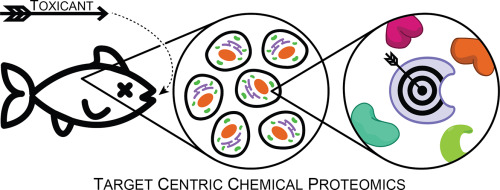当前位置:
X-MOL 学术
›
Comp. Biochem. Physiol. D Genom. Proteom.
›
论文详情
Our official English website, www.x-mol.net, welcomes your
feedback! (Note: you will need to create a separate account there.)
Characterizing physical protein targets of chemical contaminants with chemical proteomics: Is it time to fill a crucial environmental toxicology knowledge gap?
Comparative Biochemistry and Physiology D: Genomics & Proteomics ( IF 2.2 ) Pub Date : 2020-01-29 , DOI: 10.1016/j.cbd.2020.100655 David Ross Hall 1 , Hui Peng 1
Comparative Biochemistry and Physiology D: Genomics & Proteomics ( IF 2.2 ) Pub Date : 2020-01-29 , DOI: 10.1016/j.cbd.2020.100655 David Ross Hall 1 , Hui Peng 1
Affiliation

|
Current environmental toxicological studies are challenged by the immense number (>80,000) of chemical contaminants. While several strategies including adverse outcome pathway (AOP), High-Throughput Screening (HTS), and computational toxicology have been proposed to tackle this challenge, we argue here that characterizing the protein targets of chemical contaminants is the major bottleneck. In this commentary article, we reviewed current environmental toxicology research, and pinpointed the urgency to identify physical protein targets of chemical contaminants. We also reviewed several chemical proteomics methodologies developed in our and other groups, and their advantages and disadvantages to identify protein targets. At the end of the article, we also pointed out several potential follow-up research directions should be pursued once protein targets are identified.
中文翻译:

用化学蛋白质组学表征化学污染物的物理蛋白质靶标:是时候填补关键的环境毒理学知识空白了吗?
当前的环境毒理学研究面临着数量众多(> 80,000)化学污染物的挑战。尽管已经提出了包括不良结局途径(AOP),高通量筛选(HTS)和计算毒理学在内的几种策略来应对这一挑战,但我们在此认为表征化学污染物的蛋白质靶标是主要瓶颈。在这篇评论文章中,我们回顾了当前的环境毒理学研究,并指出了识别化学污染物物理蛋白质目标的紧迫性。我们还回顾了在我们和其他小组中开发的几种化学蛋白质组学方法学,以及它们在识别蛋白质靶标方面的优缺点。在文章结尾,
更新日期:2020-01-29
中文翻译:

用化学蛋白质组学表征化学污染物的物理蛋白质靶标:是时候填补关键的环境毒理学知识空白了吗?
当前的环境毒理学研究面临着数量众多(> 80,000)化学污染物的挑战。尽管已经提出了包括不良结局途径(AOP),高通量筛选(HTS)和计算毒理学在内的几种策略来应对这一挑战,但我们在此认为表征化学污染物的蛋白质靶标是主要瓶颈。在这篇评论文章中,我们回顾了当前的环境毒理学研究,并指出了识别化学污染物物理蛋白质目标的紧迫性。我们还回顾了在我们和其他小组中开发的几种化学蛋白质组学方法学,以及它们在识别蛋白质靶标方面的优缺点。在文章结尾,











































 京公网安备 11010802027423号
京公网安备 11010802027423号